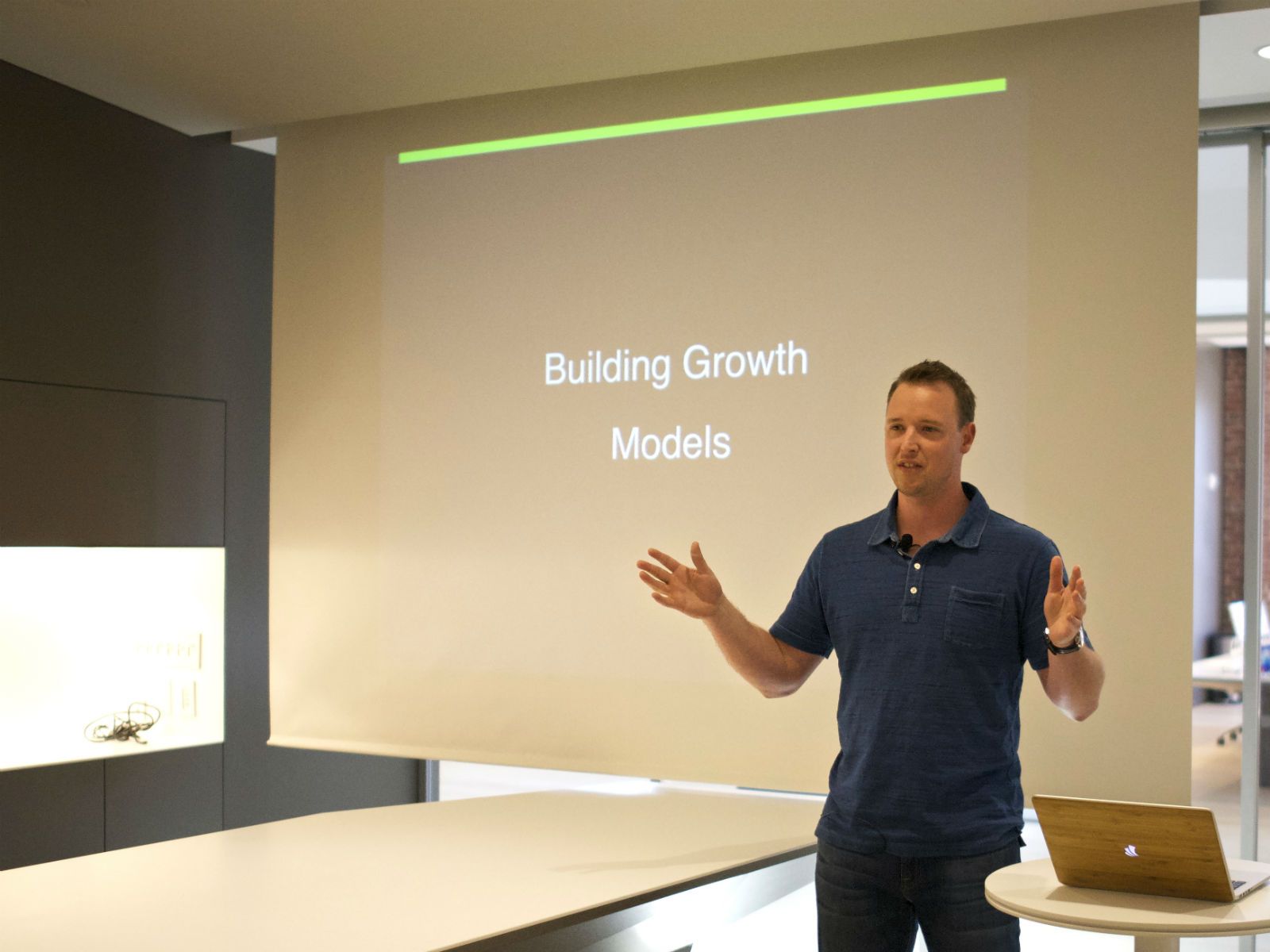Growth 101: Wealthfront’s Andy Johns on How to Build (and Test) A Sustainable Growth Model


After helping create and scale the growth functions at Facebook, Twitter, and Quora, Andy Johns decided that he wanted a new challenge.
In 2013, he found that opportunity at Wealthfront, a financial technology company that delivers sophisticated financial advice to millennials and currently manages over $2.3 billion in assets.
In addition to providing him with a “different flavor” of user to work with, Johns says he was bowled over by Wealthfront’s “magic moment”—the moment when a user realizes he or she is addicted to a service or company—when test-using the service. This moment in particular came when he checked into his account to discover the service had harvested significant capital losses in his portfolio while he was busy living his life. “Wealthfront gave me some meaningful tax benefits while I was asleep - so to speak, and helped me realized that this was what the future of investing should be like,” he said. “It was a pivotal moment for me.”
Figuring out a “magic moment” is one of three main variables Johns sees as being critical to setting up a successful framework for growth. The others, as Johns shared during a recent Index Inside event, include developing one’s “top of funnel” marketing efforts and figuring out the company’s core product value. Collectively, he says, the variables make up the basic formula for a company’s sustainable growth—and prime the company’s single biggest lever for revenue potential.
- Basic growth equation: Top of the funnel (A) x Magic Moment (B) = Sustainable Growth (C)
Figuring Out Your Growth Framework
At any given moment, startups must decide which of hundreds of different issues they should be working on that week. Growth, according to Johns, is no different. “You could work on all these offline methods and you could work on all these online methods, but fundamentally, it’s a prioritization problem.”
So where should companies looking to develop a growth function actually start? Johns says the best way to begin is for companies to step back and reassess their growth model. “Ask yourself if your framework explains how you plan to grow, and if your framework clarifies what your priorities are and how you plan to allocate headcount towards those priorities,” says Johns.
“I'm a huge advocate for defining very simple expressions of your growth,” he adds. “By making the plan simple enough for everyone to understand, you empower everyone, even individual contributors, to become better decision makers. If you can’t clearly express your plan, you limit your ability to change or manipulate different outcomes.”
Determining Your Top of Funnel Efforts and “Magic Moment”
The most tactical and straightforward of the three growth variables is determining your top-of-funnel marketing tactics, says Johns. This includes all email, social media, SEO, public relations, and other inbound marketing efforts. Marketers need to develop the top of the funnel in order to build traffic and consequently convert that traffic to predetermined business metrics.
A somewhat more intangible variable is determining your company’s “magic moment”—i.e. the moment when a new user has some experience with your product that delivers an incredible, deal-sealing response. All fundamentally transformational businesses have a magic moment that’s incredibly clear, says Johns, citing his personal experience with Wealthfront and using Uber’s app for the first time as strong examples. “Every product that you sustainably grow needs to have that magic moment.”
Figure Out Your Core Product Value
All too often, today’s startups are trying to force hyper-growth before they’ve even validated a meaningful core product value. This is a mistake, Johns warns, because at some point, the company will end up “trying to sustainably grow something that no one wants."
One current company with a clear core product value, Johns says, is Snapchat. Their core value isn’t just sexting as some like to believe; rather, it’s the removal of a designated target and mental friction from messaging. Users receiving snaps don’t have to worry about who else may be seeing a message or what their response is, and by removing that moment of hesitation, a social burden is lifted, John says.
Start Experimenting
After a growth-oriented company has defined its three core variables, it can then begin to carefully and meticulously start running experiments and see what factors affect the company’s bottom line. For example, Johns says, if a company wants to see if there’s any lift from making a ‘buy’ button on the homepage a different color or size, the team needs to identify and track all of the variables being tested, so they can suss out any weaknesses in the funnel and make adjustments.
According to Johns, one also needs to be strategic about how one runs the actual testing. Whereas big companies like Facebook and LinkedIn have the money and headcount to run hundreds of experiments every quarter—and only need a small percentage to pan out—smaller companies can’t afford to use the same tactics, nor expect to have 100% confidence in their results. Instead, Johns says, companies with smaller sample sizes (from a testing methodology standpoint) should focus on testing big changes instead of small incremental changes.
“As a steward for your company, your goal isn't to have perfect academic understanding of why that 30% lift occurred. Your bias is to produce an immediate result,” says Johns. “Later on, you can write that PhD thesis on why this one home page is better than the other.”
As for how long a growth team should let a test run for, Johns says it depends on the goal of the test. “If you’re making a monolithic change that you think is setting up the future of what your product can do and become, then you’re obviously going to run the test longer,” says Johns. “At the same time, however, you can't kill important metrics that are the lifeblood of your business.” Testers should be conscious of the experimentation platform that they’ve set up so you don’t kill a test too early based on a false negative or a false positive. “Most of the time, I’m not going to make any decisions based on the first week or two of data,” says Johns.When you get growth right, Johns says, you automatically end up establishing a sort of organizational excellence. He goes on to add that if the growth team is producing large lifts, that success is not just felt on the business side, but it’s also felt throughout the DNA of a company. “Through success, you can really start to shape a company and how it behaves in a very important way,” he says.
Posted on 21 May 2015
Published — May 21, 2015

